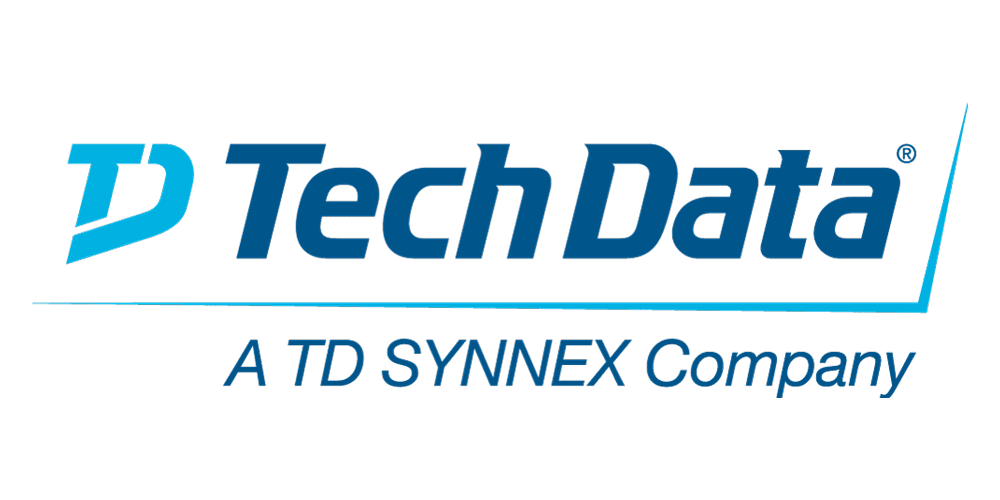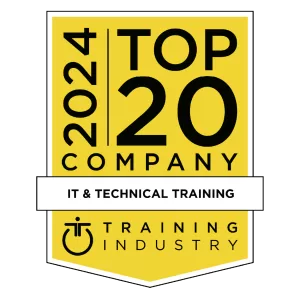This 0A008G: Introduction to IBM SPSS Modeler and Data Science v18.x course provides the fundamentals of using IBM SPSS Modeler and introduces the participant to data science. The principles and practice of data science are illustrated using the CRISP-DM methodology. The course provides training in the basics of how to import, explore, and prepare data with IBM SPSS Modeler v18.1.1, and introduces the student to modeling.
Unlock the value of your data in new ways and accelerate your journey with IBM Data and Analytics.
Provide a trusted data foundation for AI by collecting and organizing data, then virtualize it across disparate systems for AI-fueled decisions. Learn to reduce regulatory and reputational risk with solutions from IBM Watson and IBM Security.
Artificial intelligence is changing the way businesses operate, and data is the key to unlocking its potential. IBM Data and Analytics provides the tools you need to collect, organize, and act on data so you can make better decisions for your company.
IBM Data and Analytics training will provide you with expertise to elevate customer experiences, automate IT operations and improve financial planning by integrating AI into workflows and learn to create an enduring data and AI strategy with a data & AI platform that runs anywhere.
Transform your business with the power of AI. With IBM Data and Analytics, you can get ahead of the competition by making smarter decisions based on real-time data. Enroll in an IBM course today.
-
This course focuses on reviewing concepts of data science, where participants will learn the stages of a data science project. Topics include using automated tools to prepare data for analysis, build models, evaluate models, and deploy models. To learn about these data science concepts and topics, participants will use IBM SPSS Modeler as a tool.
-
This course gets you up and running with a set of procedures for analyzing time series data. Learn how to forecast using a variety of models, including regression, exponential smoothing, and ARIMA, which take into account different combinations of trend and seasonality.
The Expert Modeler features will be covered, which is designed to automatically select the best fitting exponential smoothing or ARIMA model, but you will also learn how to specify your own custom models, and also how to identify ARIMA models yourself using a variety of diagnostic tools such as time plots and auto correlation plots .
-
This 0A039G: Advanced Machine Learning Models Using IBM SPSS Modeler (V18.2) course presents advanced models available in IBM SPSS Modeler. The participant is first introduced to a technique named PCA/Factor, to reduce the number of fields to a number of core factors, referred to as components or factors. The next topics focus on supervised models, including Support Vector Machines, Random Trees, and XGBoost. Methods are reviewed on how to analyze text data, combine individual models into a single model, and how to enhance the power of IBM SPSS Modeler by adding external models, developed in Python or R, to the Modeling palette.
-
Clustering and Association Modeling Using IBM SPSS Modeler (v18.1.1) introduces modelers to two specific classes of modeling that are available in IBM SPSS Modeler: clustering and associations. Participants will explore various clustering techniques that are often employed in market segmentation studies. Participants will also explore how to create association models to find rules describing the relationships among a set of items, and how to create sequence models to find rules describing the relationships over time among a set of items.
-
This course covers advanced topics to aid in the preparation of data for a successful data science project. You will learn how to use functions, deal with missing values, use advanced field operations, handle sequence data, apply advanced sampling methods, and improve efficiency.
-
This 0A069G: IBM SPSS Modeler Foundations v18.2 course provides the foundations of using IBM SPSS Modeler and introduces the participant to data science. The principles and practice of data science are illustrated using the CRISP-DM methodology. The course provides training in the basics of how to import, explore, and prepare data with IBM SPSS Modeler v18.2, and introduces the student to modeling.
-
This 0A079G: Introduction to Machine Learning Models Using IBM SPSS Modeler v18.2 course provides an introduction to supervised models, unsupervised models, and association models. This is an application-oriented course and examples include predicting whether customers cancel their subscription, predicting property values, segment customers based on usage, and market basket analysis.
-
This 0A0U8G: Predictive Modeling for Categorical Targets Using IBM SPSS Modeler v18.1.1 course focuses on using analytical models to predict a categorical field, such as churn, fraud, response to a mailing, pass/fail exams, and machine break-down. Students are introduced to decision trees such as CHAID and CR Tree, traditional statistical models such as Logistic Regression, and machine learning models such as Neural Networks.
Students will learn about important options in dialog boxes, how to interpret the results, and explain the major differences between the models.
-
This IBM Predictive Modeling training course provides an overview of how to use IBM SPSS Modeler to predict a target field that describes numeric values. Students will be exposed to rule induction models such as CHAID and CR Tree. They will also be introduced to traditional statistical models such as Linear Regression. Students are introduced to machine learning models, such as Neural Networks. Business use case examples include: predicting the length of subscription for newspapers, telecommunication, and job length, as well as predicting insurance claim amounts.
-
This 0A108G: Introduction to IBM SPSS Modeler Text Analytics v18.1.1 course (formerly: Introduction to IBM SPSS Text Analytics for IBM SPSS Modeler (v18)) teaches you how to analyze text data using IBM SPSS Modeler Text Analytics. You will be introduced to the complete set of steps involved in working with text data, from reading the text data to creating the final categories for additional analysis. After the final model has been created, there is an example of how to apply the model to perform churn analysis in telecommunications.
Topics in this official IBM analytics course include how to automatically and manually create and modify categories, how to edit synonym, type, and exclude dictionaries, and how to perform Text Link Analysis and Cluster Analysis with text data. Also included are examples of how to create resource tempates and Text Analysis packages to share with other projects and other users.
-
This course focuses on reviewing concepts of data science, where participants will learn the stages of a data science project. Topics include using automated tools to prepare data for analysis, build models, evaluate models, and deploy models. To learn about these data science concepts and topics, participants will use IBM SPSS Modeler as a tool.
If you are enrolling in a Self Paced Virtual Classroom or Web Based Training course, before you enroll, please review the Self-Paced Virtual Classes and Web-Based Training Classes on our Terms and Conditions page, as well as the system requirements, to ensure that your system meets the minimum requirements for this course.
-
This course gets you up and running with a set of procedures for analyzing time series data. Learn how to forecast using a variety of models, including regression, exponential smoothing, and ARIMA, which take into account different combinations of trend and seasonality. The Expert Modeler features will be covered, which is designed to automatically select the best fitting exponential smoothing or ARIMA model, but you will also learn how to specify your own custom models, and also how to identify ARIMA models yourself using a variety of diagnostic tools such as time plots and autocorrelation plots.
If you are enrolling in a Self Paced Virtual Classroom or Web Based Training course, before you enroll, please review the Self-Paced Virtual Classes and Web-Based Training Classes on our Terms and Conditions page, as well as the system requirements, to ensure that your system meets the minimum requirements for this course. http://www.ibm.com/training/terms
-
This 0E038G: Advanced Predictive Modeling Using IBM SPSS Modeler v18.1.1 course presents advanced models to predict categorical and continuous targets. Before reviewing the models, data preparation issues are addressed such as partitioning, detecting anomalies, and balancing data. The participant is first introduced to a technique named PCA/Factor, to reduce the number of fields to a number of core fields, referred to as components or factors. The next units focus on supervised models, including Decision List, Support Vector Machines, Random Trees, and XGBoost. Methods are reviewed to combine supervised models and execute them in a single run, both for categorical and continuous targets.
-
This 0E039G: Advanced Machine Learning Models Using IBM SPSS Modeler v18.2 course presents advanced models available in IBM SPSS Modeler. The participant is first introduced to a technique named PCA/Factor, to reduce the number of fields to a number of core factors, referred to as components or factors. The next topics focus on supervised models, including Support Vector Machines, Random Trees, and XGBoost. Methods are reviewed on how to analyze text data, combine individual models into a single model, and how to enhance the power of IBM SPSS Modeler by adding external models, developed in Python or R, to the Modeling palette.
-
Clustering and Association Modeling Using IBM SPSS Modeler (v18.1) introduces modelers to two specific classes of modeling that are available in IBM SPSS Modeler: clustering and associations. Participants will explore various clustering techniques that are often employed in market segmentation studies. Participants will also explore how to create association models to find rules describing the relationships among a set of items, and how to create sequence models to find rules describing the relationships over time among a set of items.
If you are enrolling in a Self Paced Virtual Classroom or Web Based Training course, before you enroll, please review the Self-Paced Virtual Classes and Web-Based Training Classes on our Terms and Conditions page, as well as the system requirements, to ensure that your system meets the minimum requirements for this course. http://www.ibm.com/training/terms
-
This 0E069G: IBM SPSS Modeler Foundations v18.2 course provides the foundations of using IBM SPSS Modeler and introduces the participant to data science. The principles and practice of data science are illustrated using the CRISP-DM methodology. The course provides training in the basics of how to import, explore, and prepare data with IBM SPSS Modeler v18.2, and introduces the student to modeling.
If you are enrolling in a Self Paced Virtual Classroom or Web Based Training course, before you enroll, please review the Self-Paced Virtual Classes and Web-Based Training Classes on our Terms and Conditions page, as well as the system requirements, to ensure that your system meets the minimum requirements for this course. http://www.ibm.com/training/terms
-
This course focuses on using analytical models to predict a categorical field, such as churn, fraud, response to a mailing, pass/fail exams, and machine break-down. Students are introduced to decision trees such as CHAID and C&R Tree, traditional statistical models such as Logistic Regression, and machine learning models such as Neural Networks. Students will learn about important options in dialog boxes, how to interpret the results, and explain the major differences between the models.
If you are enrolling in a Self Paced Virtual Classroom or Web Based Training course, before you enroll, please review the Self-Paced Virtual Classes and Web-Based Training Classes on our Terms and Conditions page, as well as the system requirements, to ensure that your system meets the minimum requirements for this course.
-
This course provides an overview of how to use IBM SPSS Modeler to predict a target field that describes numeric values. Students will be exposed to rule induction models such as CHAID and C&R Tree. They will also be introduced to traditional statistical models such as Linear Regression. Students are introduced to machine learning models, such as Neural Networks. Business use case examples include: predicting the length of subscription for newspapers, telecommunication, and job length, as well as predicting insurance claim amounts.
If you are enrolling in a Self Paced Virtual Classroom or Web Based Training course, before you enroll, please review the Self-Paced Virtual Classes and Web-Based Training Classes on our Terms and Conditions page, as well as the system requirements, to ensure that your system meets the minimum requirements for this course.
-
Master the art of text analytics with IBM SPSS Modeler: From Data to Insights in 1 course.
This course (formerly: Introduction to IBM SPSS Text Analytics for IBM SPSS Modeler (v18)) teaches you how to analyze text data using IBM SPSS Modeler Text Analytics. You will be introduced to the complete set of steps involved in working with text data, from reading the text data to creating the final categories for additional analysis. After the final model has been created, there is an example of how to apply the model to perform churn analysis in telecommunications. Topics include how to automatically and manually create and modify categories, how to edit synonym, type, and exclude dictionaries, and how to perform Text Link Analysis and Cluster Analysis with text data. Also included are examples of how to create resource templates and Text Analysis packages to share with other projects and other users.
If you are enrolling in a Self Paced Virtual Classroom or Web Based Training course, before you enroll, please review the Self-Paced Virtual Classes and Web-Based Training Classes on our Terms and Conditions page, as well as the system requirements, to ensure that your system meets the minimum requirements for this course. http://www.ibm.com/training/terms
-
This 0G09BG: Advanced Statistical Analysis Using IBM SPSS Statistics v26 course provides an application-oriented introduction to advanced statistical methods available in IBM SPSS Statistics. Students will review a variety of advanced statistical techniques and discuss situations in which each technique would be used, the assumptions made by each method, how to set up the analysis, and how to interpret the results. This includes a broad range of techniques for predicting variables, as well as methods to cluster variables and cases.
-
Learn to explore, summarize and interpret data like a pro.
This 0G51BG: Statistical Analysis Using IBM SPSS Statistics v26 course provides an application-oriented introduction to the statistical component of IBM SPSS Statistics. Students will review several statistical techniques and discuss situations in which they would use each technique, how to set up the analysis, and how to interpret the results. This includes a broad range of techniques for exploring and summarizing data, as well as investigating and testing relationships.
Students will gain an understanding of when and why to use these various techniques and how to apply them with confidence, interpret their output, and graphically display the results.
-
This course guides students through the fundamentals of using IBM SPSS Statistics for typical data analysis process. Students will learn the basics of reading data, data definition, data modification, and data analysis and presentation of analytical results. Students will also see how easy it is to get data into IBM SPSS Statistics so that they can focus on analyzing the information. In addition to the fundamentals, students will learn shortcuts that will help them save time. This course uses the IBM SPSS Statistics Base features.
-
This course guides students through the fundamentals of using IBM SPSS Statistics for typical data analysis. Students will learn the basics of reading data, data definition, data modification, data analysis, and presentation of analytical results. In addition to the fundamentals, students will learn shortcuts that will help them save time. This course uses the IBM SPSS Statistics Base; one section presents an add-on module, IBM SPSS Custom Tables.
-
This course is an intermediate course designed to teach Collaboration and Deployment users object and asset management, security, shared resource usage, automation, and interaction with IBM SPSS Modeler Gold. Students focus on the makeup of the content repository and its objects. They will learn how to manage repository objects, the logical hierarchy structure, and how to import, export, and promote objects for use in multi-repository environments. Students will become familiar with the components of jobs and the mechanisms to set up, order, and relate job steps. Scheduling, parameters, job monitoring, job history, and event notification are discussed. Finally, the role of Collaboration and Deployment Services in Modeler Gold is discussed, addressing Real Time Scoring, Analytic Data View, and Model Management.
-
Out of stock
This course provides you with information about the functions of IBM’s DB2, a relational database manager which may be installed under a variety of operating systems on many hardware platforms.
DB2 runs under the z/OS, VM, Linux, UNIX, and Windows operating systems, to name a few.
The course includes discussion of how the DB2 products provide services. The focus is on the services DB2 provides and how we work with DB2, not on its internal workings.
If you are enrolling in a Self Paced Virtual Classroom or Web Based Training course, before you enroll, please review the Self-Paced Virtual Classes and Web-Based Training Classes on our Terms and Conditions page, as well as the system requirements, to ensure that your system meets the minimum requirements for this course.
-
Students will describe how the Data Masking Pack works; understand how to apply policies for different data types, understand how hash lookup policies work; create a data masking job.
If you are enrolling in a Self Paced Virtual Classroom or Web Based Training course, before you enroll, please review the Self-Paced Virtual Classes and Web-Based Training Classes on our Terms and Conditions page, as well as the system requirements, to ensure that your system meets the minimum requirements for this course
-
This official web-based IBM DB2 Analytics Accelerator course provides training in the basics of the IBM DB2 Analytics Accelerator. The course introduces the student to the product layout and functionality and describes the various ways of storing DB2 data in IBM DB2 Analytics Accelerator. In addition to IBM DB2 Analytics Accelerator, it will also teach the student how to set up and work with the IBM Data Studio Accelerator Suite. The demonstrations will explore how tables can be loaded into IBM DB2 Analytics Accelerator, how to predict if tables could run on the accelerator using special register settings, why queries may not be candidates for the accelerator, how to disable or remove tables from the Accelerator, and finally, demonstrate the monitoring feature that is built-into the accelerator studio view.
If you are enrolling in a Self Paced Virtual Classroom or Web Based Training course, before you enroll, please review the Self-Paced Virtual Classes and Web-Based Training Classes on our Terms and Conditions page, as well as the system requirements, to ensure that your system meets the minimum requirements for this course.
-
This course teaches data scientists how to use the data science capabilities of IBM Integrated Analytics System, using Watson Studio, RStudio, Spark, and in-database analytics.
-
This course teaches data engineers how to build a robust, fault-tolerant data pipeline that cleans, transforms, and aggregates unorganized and messy data into databases or datasources for IBM Integrated Analytics System. This course is designed to give the participant an overview of the IBM Integrated Analytics System architecture and provide a working knowledge and understanding of the SQL and data engineering best practices.
-
This 1W730G: IBM Integrated Analytics System (IIAS) for Administrators v1.0 course provides participants with advanced administration skills for IBM Integrated Analytics System.
This course is designed to give participants an overview of the IIAS system, show how to administer the system using the console and command line interface, and extend the appliance. Participants will also monitor the system and performance in addition to managing users and security.
If you are enrolling in a Self Paced Virtual Classroom or Web Based Training course, before you enroll, please review the Self-Paced Virtual Classes and Web-Based Training Classes on our Terms and Conditions page, as well as the system requirements, to ensure that your system meets the minimum requirements for this course.
-
Out of stock
This coure is a prerequisite for the IX224 Database Administration course. It introduces students to basic Informix terminology, system access, and data types.
If you are enrolling in a Self Paced Virtual Classroom or Web Based Training course, before you enroll, please review the Self-Paced Virtual Classes and Web-Based Training Classes on our Terms and Conditions page, as well as the system requirements, to ensure that your system meets the minimum requirements for this course.
-
This course will build a foundation for students interested in what master data is and how it is managed. The student will learn about master data management (MDM), MDM implementation styles, and a variety of MDM use cases. The student will then be introduced to multiple IBM MDM solutions and will gain an understanding of the capabilities of each solution.
If you are enrolling in a Self Paced Virtual Classroom or Web Based Training course, before you enroll, please review the Self-Paced Virtual Classes and Web-Based Training Classes on our Terms and Conditions page, as well as the system requirements, to ensure that your system meets the minimum requirements for this course.
-
This 2E121G: SQL Workshop course provides an introduction to the SQL language. This course is appropriate for those working in all DB2 environments, but particularly for, z/OS, Linux, UNIX, and Windows.
If you are enrolling in a Self Paced Virtual Classroom or Web Based Training course, before you enroll, please review the Self-Paced Virtual Classes and Web-Based Training Classes on our Terms and Conditions page, as well as the system requirements, to ensure that your system meets the minimum requirements for this course.
-
The 2L451G: DB2 11 BLU Acceleration Implementation and Use course is intended for Data Administrators that need to prepare for using the DB2 BLU Acceleration facilities of DB2 11.1 for Linux, UNIX and Windows systems. The concepts and facilities of the BLU Acceleration feature of DB2 11 are presented including loading data into column-organized tables and monitoring the processing of SQL statements that access the tables.
The DB2 10.5 Fix Pack 4, referred to as Cancun, added support for Shadow tables, a new type of Materialized Query Table, and also Column-organized User Maintained MQT tables. One lecture unit describes these features. A demonstration allows students to implement and experiment with these functions. With DB2 11.1, BLU Acceleration can be used in a clustered multiple database partition DB2 environment.
This course includes a lecture and demonstration that allows students to create a set of column-organized tables from an existing set of row-organized tables and execute and analyze the performance of BLU Acceleration in a MPP database. The lab demonstrations are performed using DB2 LUW 11.1 for Linux.
If you are enrolling in a Self Paced Virtual Classroom or Web Based Training course, before you enroll, please review the Self-Paced Virtual Classes and Web-Based Training Classes on our Terms and Conditions page, as well as the system requirements, to ensure that your system meets the minimum requirements for this course.
-
This 2L464G: Db2 11.1 Advanced Database Administration course is designed to teach you how to:
- Perform advanced monitoring using the Db2 administrative views and routines in SQL queries.
- Manage the disk space assigned in Database Managed Storage (DMS) and Automatic Storage table spaces, including the activities of the rebalancer.
- Use SQL queries and Db2 commands to check the high water mark on table spaces and to monitor the rebalance operation.
- Utilize the REBUILD option of RESTORE, which can build a database copy with a subset of the tablespaces using database or tablespace backup images.
- Plan and execute the TRANSPORT option of RESTORE to copy schemas of objects between two Db2 databases.
- Create incremental database or tablespace level backups to reduce backup processing and backup image storage requirements.
- Implement automatic storage management for table spaces and storage groups or enable automatic resize options for DMS managed table spaces to reduce administration requirements and complexity.
- Describe the various types of database memory including buffer pools, sort memory, lock memory and utility processing memory.
- Adjust database or Db2 instance configuration options to improve application performance or processing efficiency.
- Implement Db2 Self Tuning Memory management for specific database memory areas.
If you are enrolling in a Self Paced Virtual Classroom or Web Based Training course, before you enroll, please review the Self-Paced Virtual Classes and Web-Based Training Classes on our Terms and Conditions page, as well as the system requirements, to ensure that your system meets the minimum requirements for this course.







